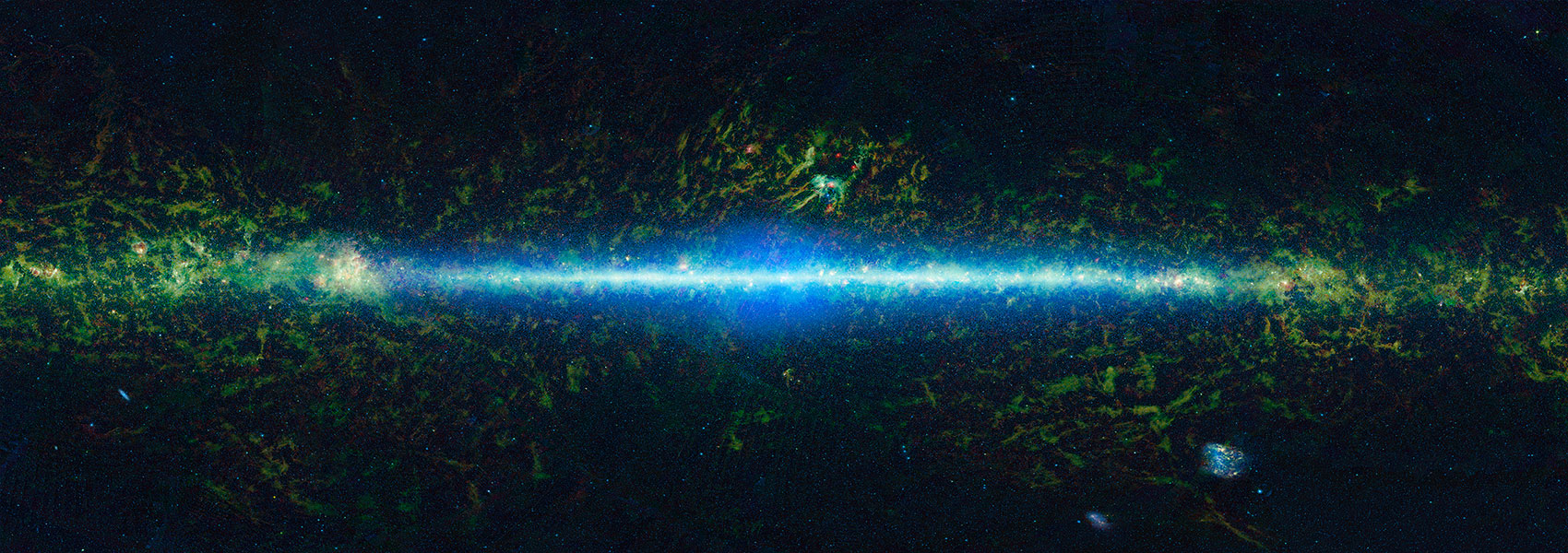December
2011
•
2011A&A...536A...9P
Authors
•
Planck Collaboration
•
Aghanim, N.
•
Arnaud, M.
•
Ashdown, M.
•
Aumont, J.
•
Baccigalupi, C.
•
Balbi, A.
•
Banday, A. J.
•
Barreiro, R. B.
•
Bartelmann, M.
•
Bartlett, J. G.
•
Battaner, E.
•
Benabed, K.
•
Benoît, A.
•
Bernard, J. -P.
•
Bersanelli, M.
•
Bhatia, R.
•
Bock, J. J.
•
Bonaldi, A.
•
Bond, J. R.
•
Borrill, J.
•
Bouchet, F. R.
•
Brown, M. L.
•
Bucher, M.
•
Burigana, C.
•
Cabella, P.
•
Cantalupo, C. M.
•
Cardoso, J. -F.
•
Carvalho, P.
•
Catalano, A.
•
Cayón, L.
•
Challinor, A.
•
Chamballu, A.
•
Chiang, L. -Y.
•
Chon, G.
•
Christensen, P. R.
•
Churazov, E.
•
Clements, D. L.
•
Colafrancesco, S.
•
Colombi, S.
•
Couchot, F.
•
Coulais, A.
•
Crill, B. P.
•
Cuttaia, F.
•
da Silva, A.
•
Dahle, H.
•
Danese, L.
•
de Bernardis, P.
•
de Gasperis, G.
•
de Rosa, A.
•
de Zotti, G.
•
Delabrouille, J.
•
Delouis, J. -M.
•
Désert, F. -X.
•
Diego, J. M.
•
Dolag, K.
•
Donzelli, S.
•
Doré, O.
•
Dörl, U.
•
Douspis, M.
•
Dupac, X.
•
Efstathiou, G.
•
Enßlin, T. A.
•
Finelli, F.
•
Flores-Cacho, I.
•
Forni, O.
•
Frailis, M.
•
Franceschi, E.
•
Fromenteau, S.
•
Galeotta, S.
•
Ganga, K.
•
Génova-Santos, R. T.
•
Giard, M.
•
Giardino, G.
•
Giraud-Héraud, Y.
•
González-Nuevo, J.
•
González-Riestra, R.
•
Górski, K. M.
•
Gratton, S.
•
Gregorio, A.
•
Gruppuso, A.
•
Harrison, D.
•
Heinämäki, P.
•
Henrot-Versillé, S.
•
Hernández-Monteagudo, C.
•
Herranz, D.
•
Hildebrandt, S. R.
•
Hivon, E.
•
Hobson, M.
•
Holmes, W. A.
•
Hovest, W.
•
Hoyland, R. J.
•
Huffenberger, K. M.
•
Hurier, G.
•
Jaffe, A. H.
•
Juvela, M.
•
Keihänen, E.
•
Keskitalo, R.
•
Kisner, T. S.
•
Kneissl, R.
•
Knox, L.
•
Kurki-Suonio, H.
•
Lagache, G.
•
Lamarre, J. -M.
•
Lasenby, A.
•
Laureijs, R. J.
•
Lawrence, C. R.
•
Le Jeune, M.
•
Leach, S.
•
Leonardi, R.
•
Liddle, A.
•
Linden-Vørnle, M.
•
López-Caniego, M.
•
Lubin, P. M.
•
Macías-Pérez, J. F.
•
Maffei, B.
•
Maino, D.
•
Mandolesi, N.
•
Mann, R.
•
Maris, M.
•
Marleau, F.
•
Martínez-González, E.
•
Masi, S.
•
Matarrese, S.
•
Matthai, F.
•
Mazzotta, P.
•
Melchiorri, A.
•
Melin, J. -B.
•
Mendes, L.
•
Mennella, A.
•
Mitra, S.
•
Miville-Deschênes, M. -A.
•
Moneti, A.
•
Montier, L.
•
Morgante, G.
•
Mortlock, D.
•
Munshi, D.
•
Murphy, A.
•
Naselsky, P.
•
Natoli, P.
•
Netterfield, C. B.
•
Nørgaard-Nielsen, H. U.
•
Noviello, F.
•
Novikov, D.
•
Novikov, I.
•
Osborne, S.
•
Pajot, F.
•
Pasian, F.
•
Patanchon, G.
•
Perdereau, O.
•
Perotto, L.
•
Perrotta, F.
•
Piacentini, F.
•
Piat, M.
•
Pierpaoli, E.
•
Piffaretti, R.
•
Plaszczynski, S.
•
Pointecouteau, E.
•
Polenta, G.
•
Ponthieu, N.
•
Poutanen, T.
•
Pratt, G. W.
•
Prézeau, G.
•
Prunet, S.
•
Puget, J. -L.
•
Rebolo, R.
•
Reinecke, M.
•
Renault, C.
•
Ricciardi, S.
•
Riller, T.
•
Ristorcelli, I.
•
Rocha, G.
•
Rosset, C.
•
Rubiño-Martín, J. A.
•
Rusholme, B.
•
Saar, E.
•
Sandri, M.
•
Santos, D.
•
Schaefer, B. M.
•
Scott, D.
•
Seiffert, M. D.
•
Smoot, G. F.
•
Starck, J. -L.
•
Stivoli, F.
•
Stolyarov, V.
•
Sunyaev, R.
•
Sygnet, J. -F.
•
Tauber, J. A.
•
Terenzi, L.
•
Toffolatti, L.
•
Tomasi, M.
•
Torre, J. -P.
•
Tristram, M.
•
Tuovinen, J.
•
Valenziano, L.
•
Vibert, L.
•
Vielva, P.
•
Villa, F.
•
Vittorio, N.
•
Wandelt, B. D.
•
White, S. D. M.
•
Yvon, D.
•
Zacchei, A.
•
Zonca, A.
Abstract
•
We present the XMM-Newton follow-up for confirmation of Planck cluster candidates. Twenty-five candidates have been observed to date using snapshot (~10ks) exposures, ten as part of a pilot programme to sample a low range of signal-to-noise ratios (4 < S/N < 6), and a further 15 in a programme to observe a sample of S/N > 5 candidates. The sensitivity and spatial resolution of XMM-Newton allows unambiguous discrimination between clusters and false candidates. The 4 false candidates have S/N ≤ 4.1. A total of 21 candidates are confirmed as extended X-ray sources. Seventeen are single clusters, the majority of which are found to have highly irregular and disturbed morphologies (about ~70%). The remaining four sources are multiple systems, including the unexpected discovery of a supercluster at z = 0.45. For 20 sources we are able to derive a redshift estimate from the X-ray Fe K line (albeit of variable quality). The new clusters span the redshift range 0.09 ≲ z ≲ 0.54, with a median redshift of z ~ 0.37. A first determination is made of their X-ray properties including the characteristic size, which is used to improve the estimate of the SZ Compton parameter, Y500. The follow-up validation programme has helped to optimise the Planck candidate selection process. It has also provided a preview of the X-ray properties of these newly-discovered clusters, allowing comparison with their SZ properties, and to the X-ray and SZ properties of known clusters observed in the Planck survey. Our results suggest that Planck may have started to reveal a non-negligible population of massive dynamically perturbed objects that is under-represented in X-ray surveys. However, despite their particular properties, these new clusters appear to follow the Y500-YX relation established for X-ray selected objects, where YX is the product of the gas mass and temperature.
Corresponding author: E. Pointecouteau, e-mail: etienne.pointecouteau@irap.omp.eu
Links



